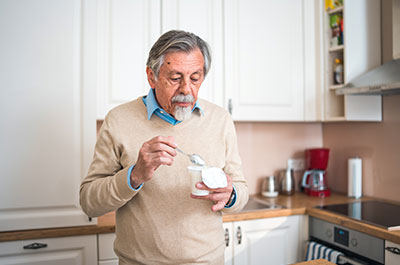Adolescents who live in rural areas are less likely to receive the HPV vaccine than adolescents who live in urban areas, according to a recent Henry Ford Health study. The study, which used data from Illinois, found that rural adolescents are 38% less likely to initiate the HPV vaccine series and 24% less likely to complete the HPV vaccine series.
“The study population of adolescents ages 11 to 17 only included those who had already received at least one dose of a childhood- or adolescent-recommended vaccine such as the hepatitis B, measles, mumps and rubella (MMR) or meningococcal vaccine,” says Eric Adjei Boakye, Ph.D., an assistant scientist at Henry Ford Health who worked on the study. “If we were able to obtain data from the entire population—including those who had no vaccinations at all—vaccination coverage among adolescents who live in rural areas would have been worse.”
Why Is There A Disparity Between Vaccination Rates In Rural And Urban Areas?
Dr. Adjei Boakye says this disparity between vaccination rates in urban versus rural areas extends to all ages and vaccinations. (Think: Tdap, hepatitis A, hepatitis B, MMR, the COVID-19 vaccines—and the list continues.)
“The biggest reason for this disparity is access to care—specifically transportation barriers,” says Dr. Adjei Boakye. “There are fewer healthcare systems in rural areas and they are almost always overwhelmed with patients. They are more focused on caring for people who are sick. They might not have time to talk to patients about vaccinations. With the HPV vaccine, the provider almost always has to recommend it. There aren’t many people who take the initiative to get the HPV vaccine.”
And when the COVID-19 vaccine first came out, it was almost impossible for those in rural areas to get it. “At that time, people who lived in urban areas were camping out at vaccination centers, staying for four, five hours to get vaccinated,” says Dr. Adjei Boakye. “If you lived in a rural area, you probably couldn’t afford to drive a long way and then wait for hours.”
Negative publicity surrounding vaccines is also partly to blame. With the HPV vaccine, some believe vaccination will promote sexual activity among adolescents (or make them more sexually promiscuous) and those in rural areas tend to be more conservative.
With the COVID-19 vaccine, untrue rumors quickly abound that made people hesitant to get vaccinated. And these rumors, unfortunately, turned into myths about other routine vaccinations, too. Since those who live in rural areas have less access to medical professionals—who can dispel rumors and give them accurate information about vaccines—they might think everything they read online is true.
In fact, vaccine hesitation is one reason why childhood diseases that had been wholly or mostly eradicated—like polio and the measles—have been recently spotted in the United States.
How Can We Increase Vaccination Rates In Rural Areas?
“Mobile mammography has become popular in rural areas; I think this can be done with vaccinations,” says Dr. Adjei Boakye. “If a van shows up at a school or a local health fair and they give away free vaccines, I’m sure some people will get vaccinated. People won’t have to worry about whether they can afford it or whether they have the time or transportation to drive to a healthcare center to get vaccinated.”
“But the second hurdle—which there is no easy solution for—is reducing vaccine misinformation. Something has to be done; it’s just difficult to know what to do.”
Why It’s Important To Increase Vaccination Rates In Rural Areas
Since those who live in rural areas are less likely to have access to healthcare, it’s even more important for them to get the vaccinations needed to prevent severe illness. “HPV causes a variety of cancers,” says Dr. Adjei Boakye. “And those who live in rural areas are less likely to get cancer screenings. So if they get HPV and develop an HPV-associated cancer, they are more likely to be diagnosed at a late stage where survival is much lower.”
It’s sadly a similar story with COVID-19. “If you adjust for population density, the percentage of people who died from COVID-19 is higher in rural areas than in urban areas,” says Dr. Adjei Boakye. “When they got sick they didn’t have anywhere to go for care—there were no resources so they had to drive two, three hours to urban areas, which most people couldn’t afford to do. So our best bet for helping people who live in rural areas is by focusing on prevention whenever possible, such as increasing vaccination coverage.”
To find a primary care doctor at Henry Ford Health, visit henryford.com or call 1-800-436-7936.
Eric Adjei Boakye, Ph.D., is an assistant scientist in the Department of Public Health Sciences at Henry Ford Health.



